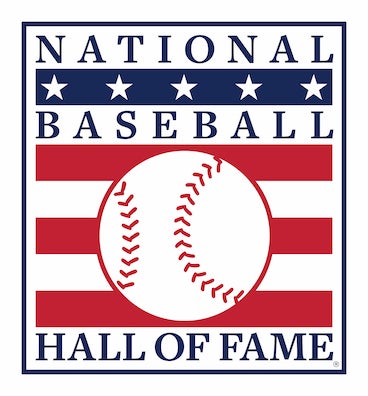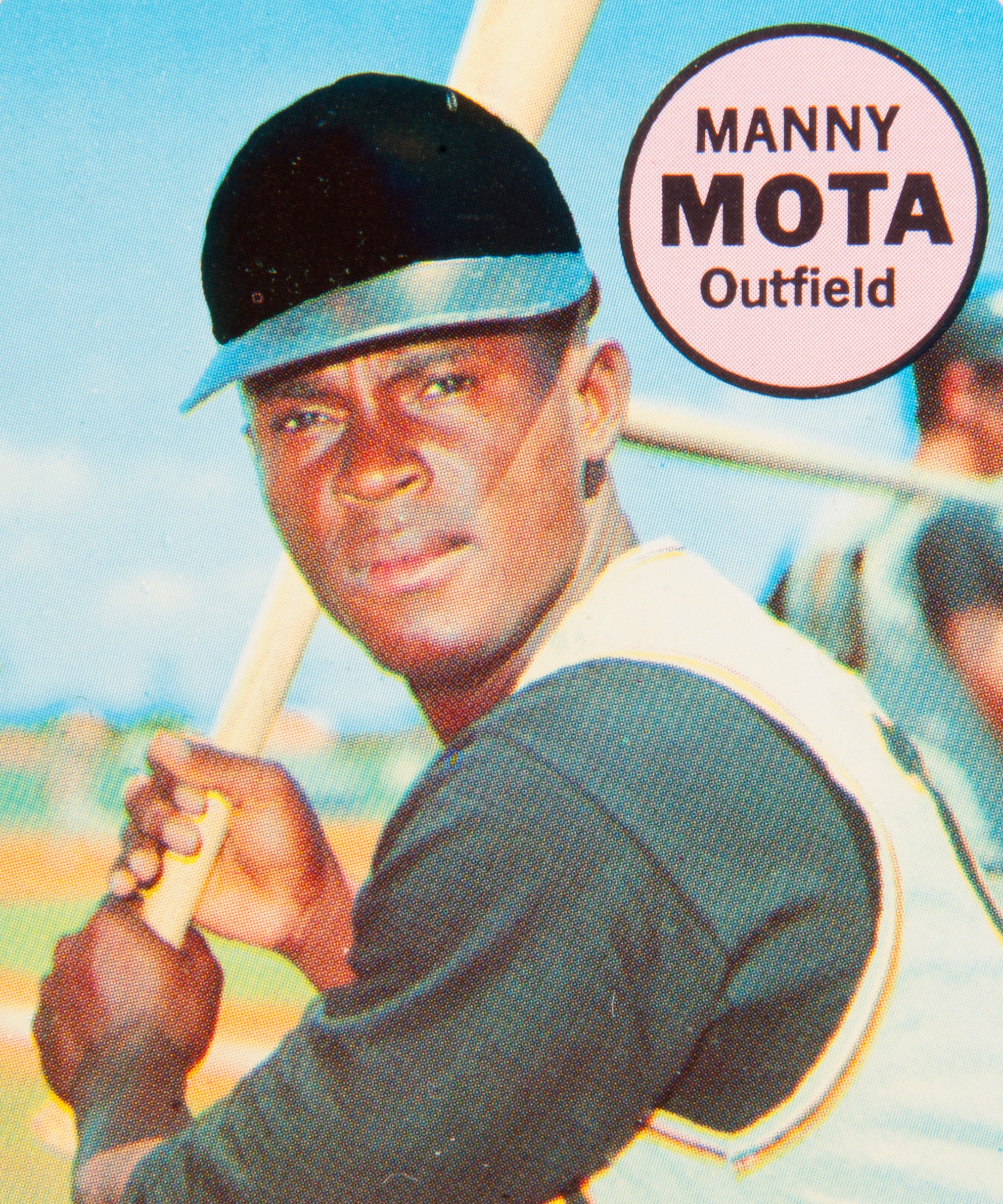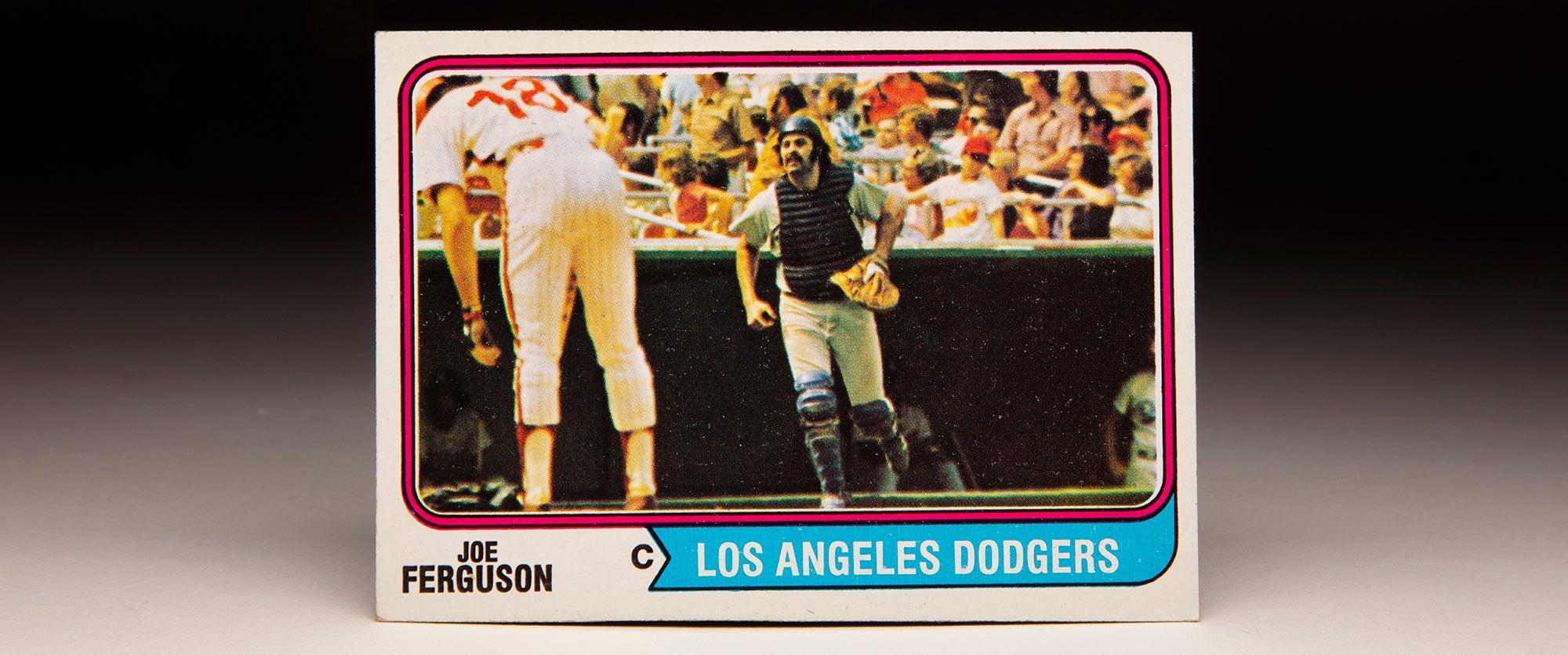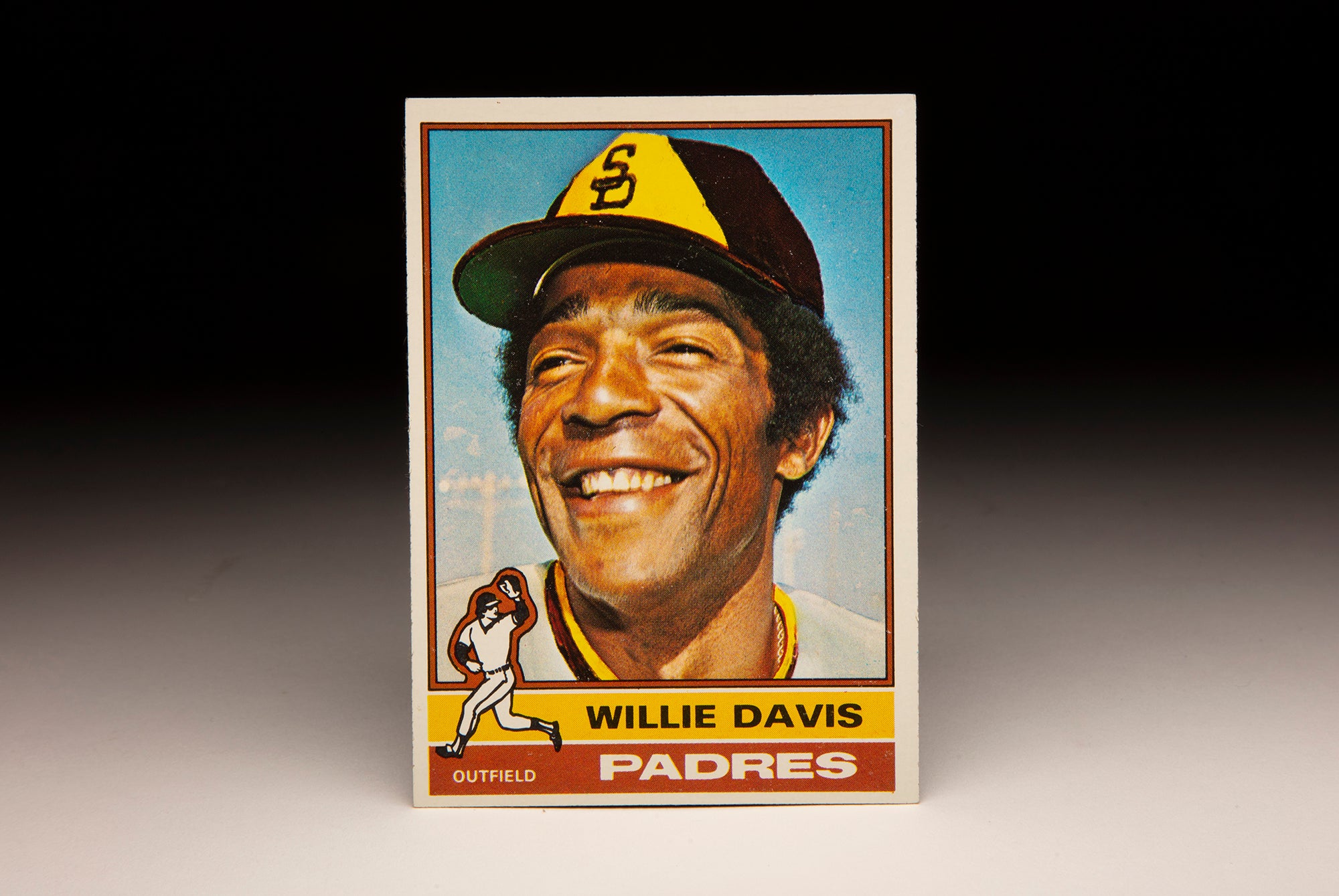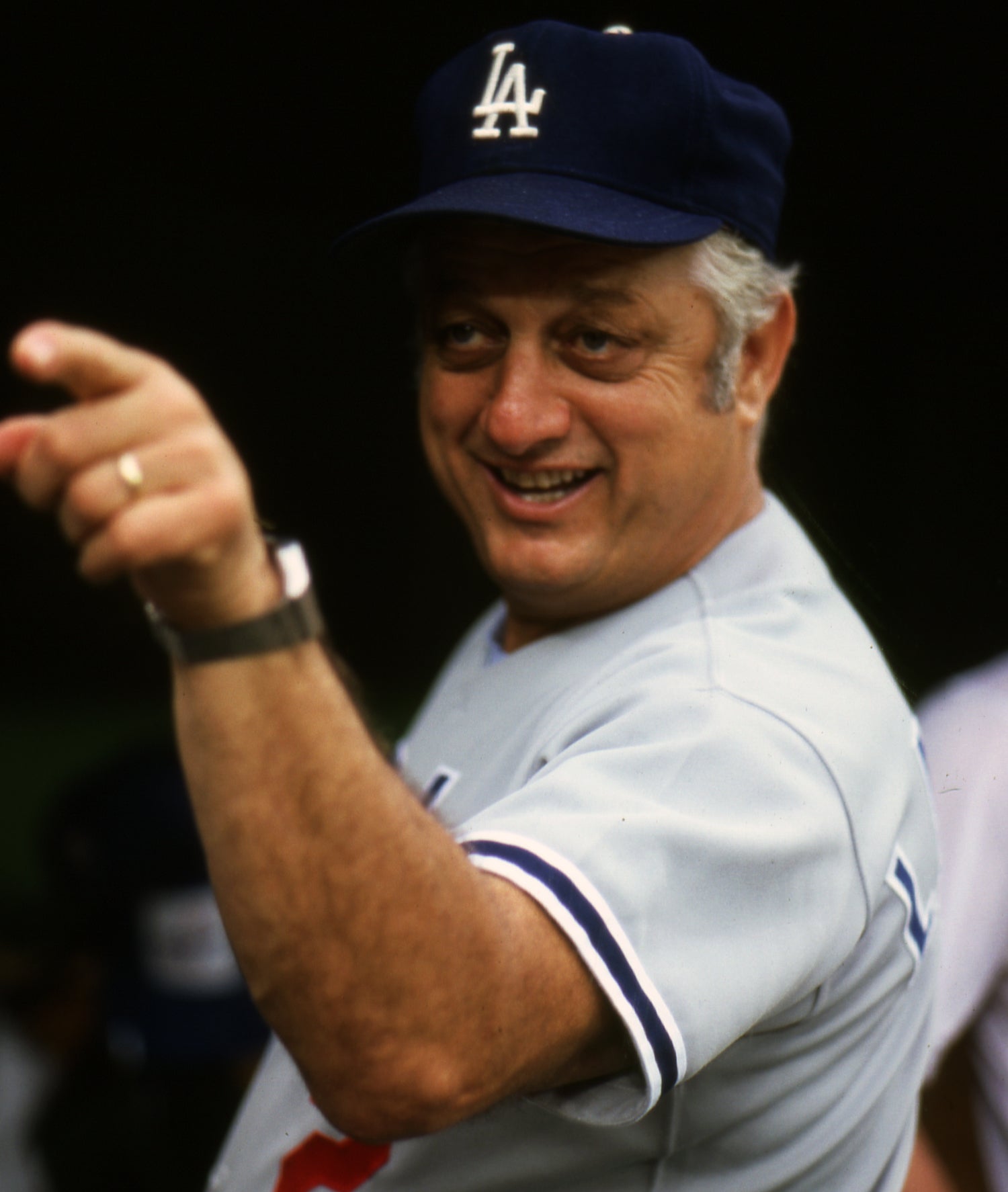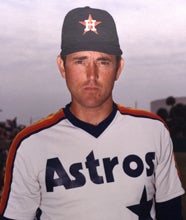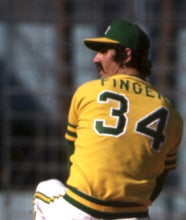- Home
- Our Stories
- #CardCorner: 1971 Topps Von Joshua
#CardCorner: 1971 Topps Von Joshua
Of all the prospects that emerged from the star-studded Dodgers farm system of the late 1960s and early 70s, Von Joshua may have been the most heralded.
“If we had to pick one player off that team who we thought couldn’t miss,” Dodgers executive Al Campanis told the Newark Star-Ledger about the 1972 Albuquerque Dukes, “it probably would have been Joshua.”
That Albuquerque team finished 92-56 under manager Tommy Lasorda, winning the Pacific Coast League title with a lineup that featured Ron Cey, Joe Ferguson, Larry Hisle, Davey Lopes, Tom Paciorek and Steve Yeager and a pitching staff that included Charlie Hough, Doug Rau, Rick Rhoden and Geoff Zahn. But it was Joshua, who led the team and the league with a .337 batting average, who seemed destined for stardom.
Just six seasons later, Joshua found himself in the Mexican League. But he never gave up on his big league dreams – and played in the majors in 1979 and ’80 before transitioning into a coaching role that lasted well into the new century.
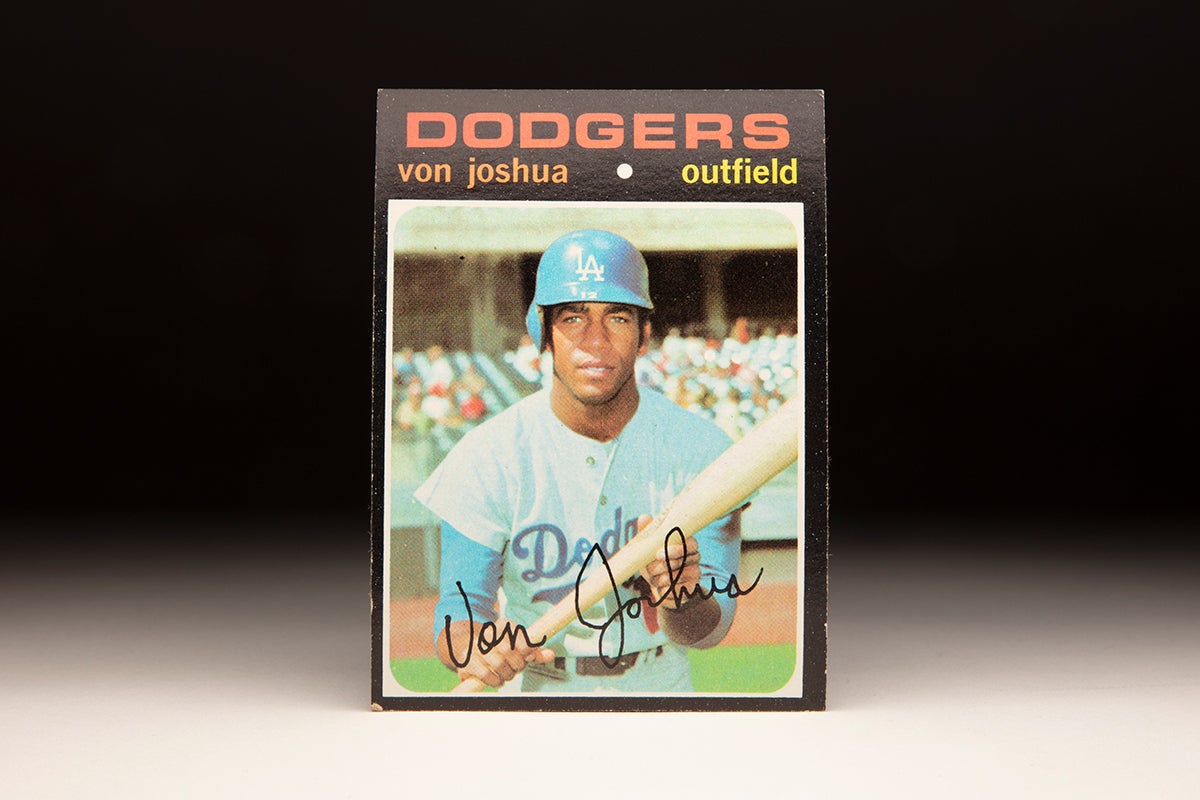
Born May 1, 1948, in Oakland, Calif., Von Everett Joshua was the son of an elementary school principal (father) and teacher (mother).
“At my house, when I was a kid, it was always hit the books first and then go play,” Joshua told the Daily Breeze of Torrance, Calif., in 1973. “So I always got pretty good school marks.”
Joshua graduated from Castlemont High School and enrolled at Chabot College in Hayward, Calif., after going undrafted out of high school. But the Giants spotted him at Chabot and took him with the 17th overall pick in the January 1967 MLB Draft – a round that also saw Carlton Fisk and Ken Singleton selected.
But Joshua and the Giants could not come to an agreement, and Joshua transferred to Laney College, a community college in Oakland. On June 28, 1967, the Dodgers signed Joshua as an amateur free agent.
Joshua reported to the Tri-City Atoms of the Northwest League, where he hit a league-leading .363 with 57 runs scored in 66 games before ending the season with Class A Santa Barbara of the California League. He advanced to Double-A Albuquerque in 1968, batting .298 in 74 games – missing time due to military reserve obligations in Oakland – and earning high praise from Campanis, who was then the Dodgers scouting director.
“I would say (Bobby) Valentine and Von Joshua are the finest young center fielders we have had,” Campanis told the Pasadena Independent.
The Dodgers put Joshua on their 40-man roster following the 1968 season then sent him to Triple-A Spokane in 1969, where he hit .277 with 34 steals in 107 games before earning a late-season promotion to Los Angeles. Joshua appeared in 14 games for the Dodgers at the end of the 1969 season, hitting .250 while going 2-for-3 in his first start on Oct. 1 vs. the Astros.
“He appears to have all the tools,” Dodgers manager Walter Alston told reporters.
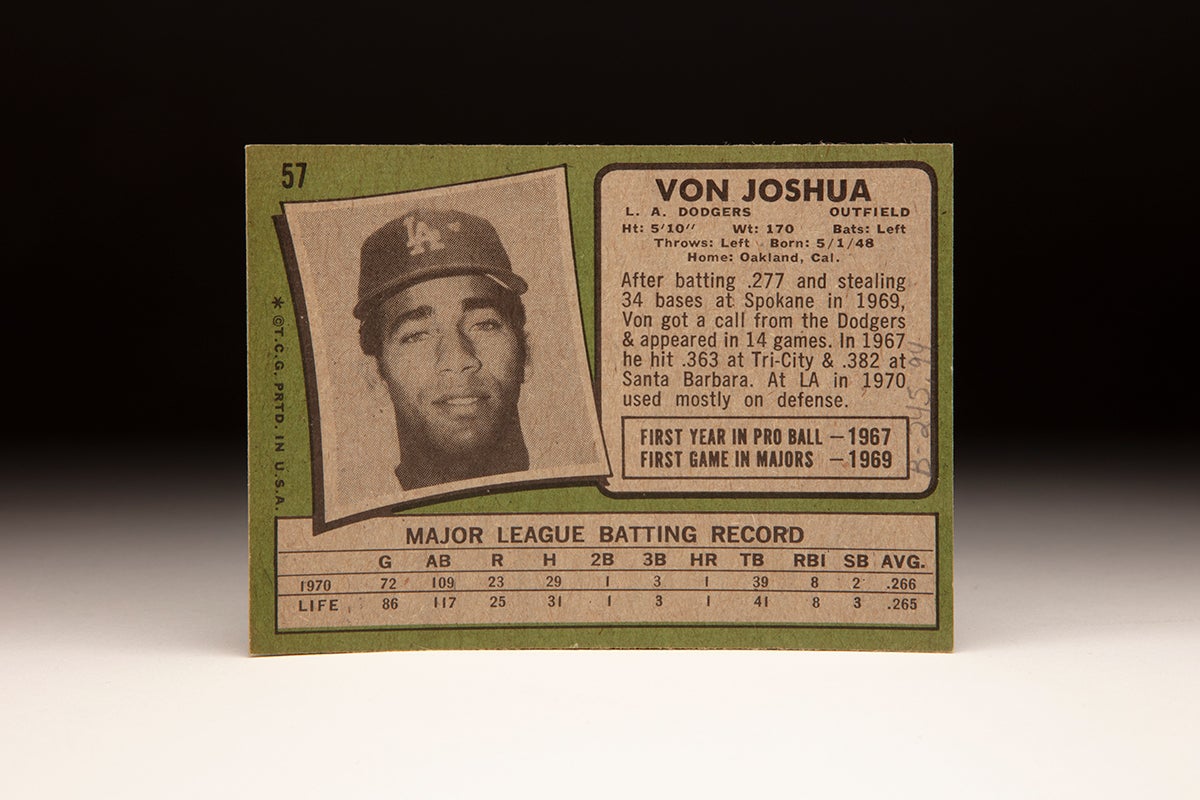
Thus began a three-year stretch where Joshua shuttled back and forth between the Dodgers and Triple-A. He began the 1970 season with Spokane but was recalled to the majors in May when Bill Buckner was sent down – and had six hits in his first three games, including two off the Mets’ Nolan Ryan on May 5.
“He’s got the hot bat and I’m not about to take him out the way he is going,” Alston told the Independent as he kept veteran Willie Davis on the bench in favor of Joshua. “It would be silly to change now.”
But Joshua eventually cooled off and Davis returned to the lineup, posting one of his best years in the big leagues while hitting .305 with 93 RBI and an MLB-best 16 triples. Joshua stayed on the team for the rest of the season, batting .266 with a homer, eight RBI and 23 runs scored in 72 games.
Joshua saw extensive playing time in Spring Training in 1971 but was among the Dodgers’ final cuts and was sent back to Spokane.
“I’m a little disappointed but not too surprised,” Joshua told the Oakland Tribune after being sent down. “Maybe it’s a blessing in disguise. I’ll have a chance to play regularly at Spokane, to prove to the Dodgers that they made a mistake. Maybe…I’ll interest another club in trading for me.”
Joshua was recalled in Los Angeles in early May and spent the next two months with L.A. before being sent back to Spokane – reportedly finding out about the demotion via a newspaper story he was reading on a team flight to San Diego. He did not play for the Dodgers again in 1971, hitting .267 in 56 games for Spokane – he was sidelined for a time with a leg injury – before he was left off Los Angeles’ 40-man roster over the winter.
Joshua was available in the Rule 5 Draft but was not selected.
“I thought I would get drafted,” Joshua told the Albuquerque Journal after being assigned to the Triple-A Albuquerque Dukes – the Dodgers moved their Triple-A team over the winter – in the spring of 1972. “I don’t know if I figure in the Dodgers’ plans for the future. But I’m not going to spend the rest of my life in the minors.”
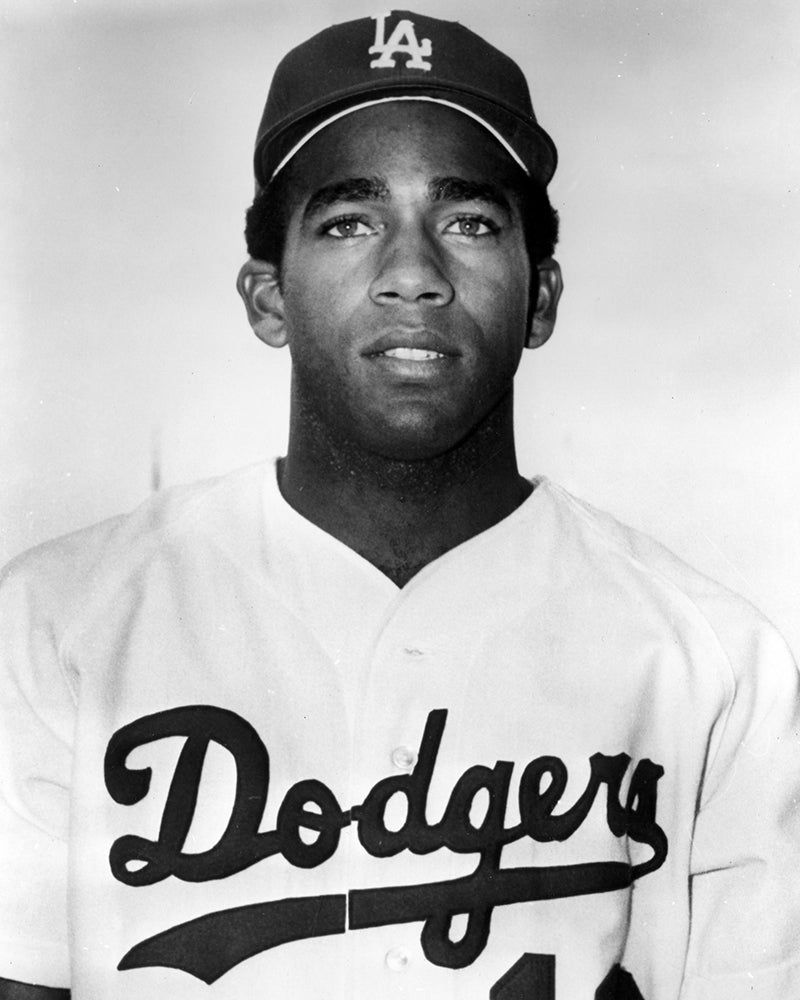
Entering what amounted to a make-or-break season, Joshua spent the entire year in Albuquerque, appearing in 125 games and scoring 93 runs, driving in 76 and stealing 17 bases. He followed that up by winning the Dominican League batting crown with a .358 average, then continued his hot hitting in Spring Training in 1973.
“I can’t think that he’ll do anything but be with the big club,” Lasorda, who joined Alston’s coaching staff in Los Angeles in 1973, told the Daily Breeze of Torrance, Calif., that spring.
Joshua made the Opening Day roster and pinch-hit in the opener against the Padres but found himself sharing time with Manny Mota and Tom Paciorek in left field. A broken hand sidelined him for much of April and May but he stayed with the big club all year, batting .252 over 75 games.
“I’m looking forward to next year,” Joshua told United Press International during the season’s final days. “I just hope I get a chance to play more. If they (the Dodgers’ front office) don’t split us up too much, we should have a pretty good team next year.”
Joshua was correct: The Dodgers won 95 games in 1973, finishing second to the Reds in the National League West. Then in 1974, Los Angeles won 102 games to win the division, with Joshua batting .234 over 81 games as the team’s primary lefty pinch-hitting option.
In the postseason, Joshua made five appearances – one in the NLCS vs. Pittsburgh and four in the World Series vs. Oakland – all as a pinch-hitter. He was 0-for-4 with a walk and became part of history when he grounded out to Rollie Fingers to end Game 5 – the last out in the Athletics’ 3-2 win that clinched Oakland’s third straight title.
Joshua also made the final out in Game 4 as slick-fielding Oakland second baseman Dick Green snagged a sharp grounder off Joshua’s bat and turned it into a game-ending double play in a 5-2 Oakland win.
“I definitely won’t be back next year,” Joshua told the San Francisco Examiner after the World Series. “And you can print it.”
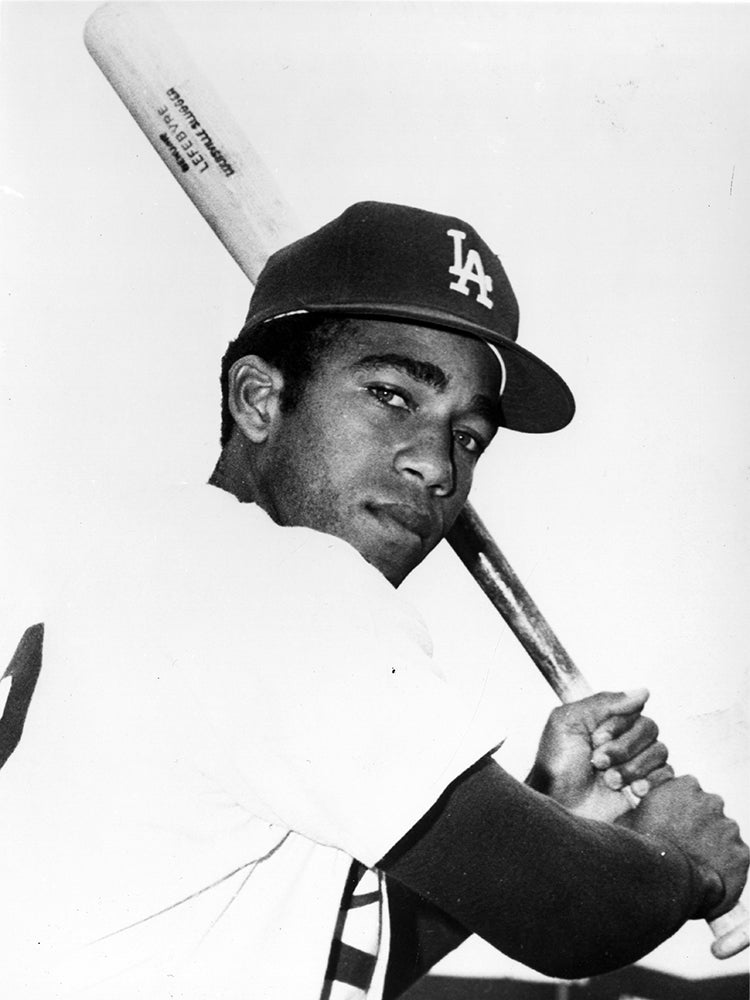
Joshua had asked for a trade in the middle of the season when Alston moved catcher Joe Ferguson to right field, cutting into Joshua’s available at-bats. But the Dodgers asked Joshua to remain until the season was completed, when they promised to accommodate him.
Joshua and Alston had issues throughout the year.
“I hit .460 in Spring Training, started the opening game and then sat on the bench,” Joshua told the Examiner.
On Jan. 29, 1975, the Giants claimed Joshua off waivers for $20,000, allowing him a chance to play near his childhood home. But with Gary Mathews, Garry Maddox and Bobby Murcer set in San Francisco’s outfield, it looked like Joshua would only be competing for a spot on the bench.
“I had my doubts throughout Spring Training,” Joshua told the Peninsula Times Tribune of Palo Alto, Calif., midway through the 1975 season. “But (Giants manager) Wes (Westrum) told me not to get frustrated.”
Joshua performed well in Spring Training, and on May 4, the Giants opened up center field for Joshua by trading Maddox to the Phillies in exchange for Willie Montañez.
“Von did everything,” Westrum told the Times Tribune. “He got on base every day and made all the plays. He made Maddox expendable.”
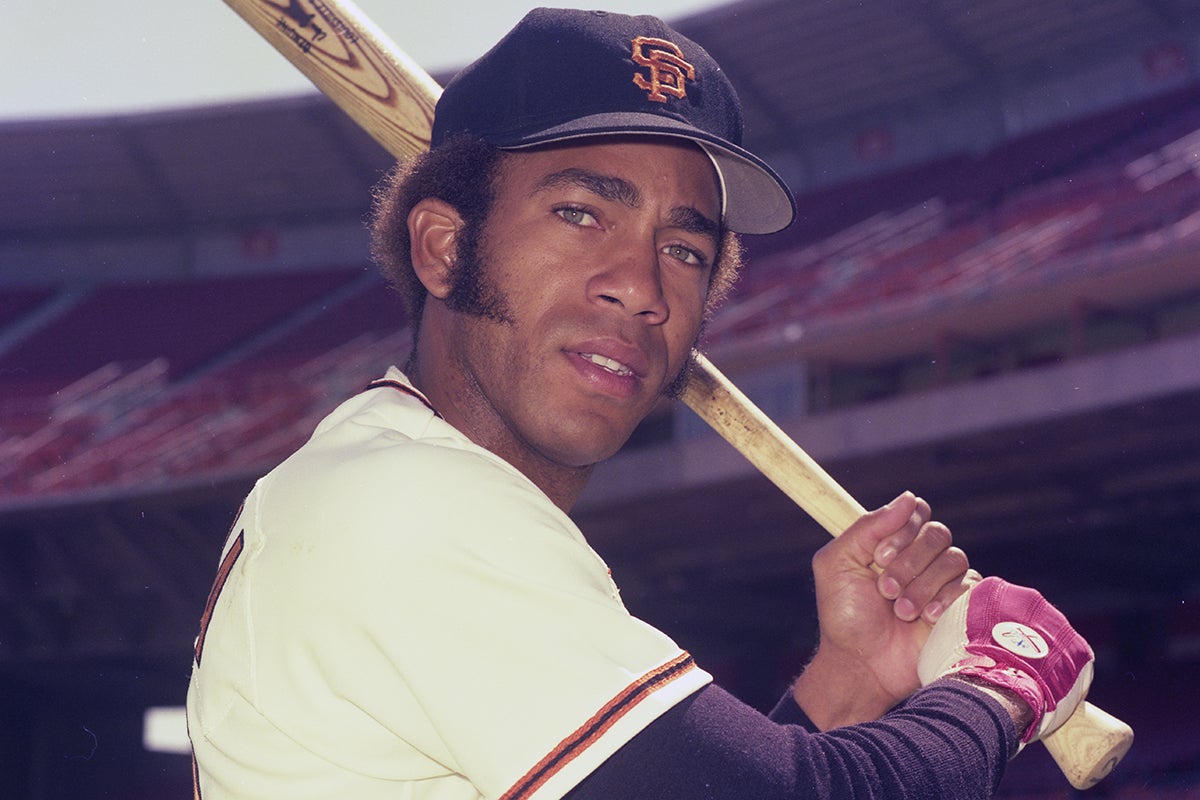
Joshua proved Westrum correct as he hit .318 – seventh-best in the National League – with 25 doubles, 10 triples (missing the league lead by one), 20 stolen bases and 75 runs scored in 129 games. He also led all NL center fielders with a .993 fielding percentage.
“There was never any doubt in my mind that I could play,” Joshua told the Times Tribune. “All I needed was the chance.
“I feel I’ve proved I could play the game. There’s no right-hander in the league that can get me out consistently.”
Joshua started in center field on Opening Day in 1976 but was moved to a bench role in May when rookie Larry Herndon came up from the minors and stayed red hot for a month, batting .397 heading into June.
On June 2, the Brewers grabbed Joshua off waivers when no National League team claimed him. Milwaukee made Joshua its center fielder, and he finished the season with a combined .266 batting average with 154 hits in 149 games. But he totaled only 30 extra base hits and 30 RBI.
“I’d just like to forget about last year,” Joshua told the Journal Times of Racine, Wis., during Spring Training in 1977. “I was down on myself. I was coming into a last-place club where the attitude was not all that keen. It was a struggle just to keep going.
“Milwaukee’s main concern was they didn’t think I was putting out. They were critical of my style of play and said I didn’t hustle. It’s followed me throughout my career. It’s followed me all the way from Alston when I started with the Dodgers. Harassment has followed me everywhere.”

Joshua hit .261 with 25 doubles, nine homers and 49 RBI in 144 games in 1977. But his -2.4 Wins Above Replacement figure was the worst of any American League position player.
On March 30, 1978, the Brewers cut ties with Joshua.
“We’re releasing you,” Brewers general manager Harry Dalton told Joshua. “We feel that we have too many outfielders and we have to let you go.”
When no MLB teams showed interest, Joshua signed on with Tabasco of the Mexican League, where he was also the team’s manager. He hit .305 in 107 games that year, then batted .350 in the Mexican Winter League for Culiácan following the 1978 season, second only to Dodgers’ prospect Rudy Law’s .377.
On Jan. 9, 1979, the Dodgers purchased Joshua’s contract from Tabasco and signed him to a two-year contract worth a reported $300,000.
“(Dodgers scout Mike) Brito told me Joshua can still play,” Al Campanis said after signing Joshua. “He can still run and hit and he’s a decent outfielder. We can use him. I don’t know if he’ll play regularly, but I think he can accept that. He’s happy that we purchased him. He’s only 30 years old and he can play for several years.”
Joshua reprised his role of five years before with the Dodgers and did it well, batting .282 in 94 games off the bench.
“He’s been a godsend to us,” Lasorda told the AP early in the 1979 season. “He’s swinging the bat better than I’ve ever seen him.”
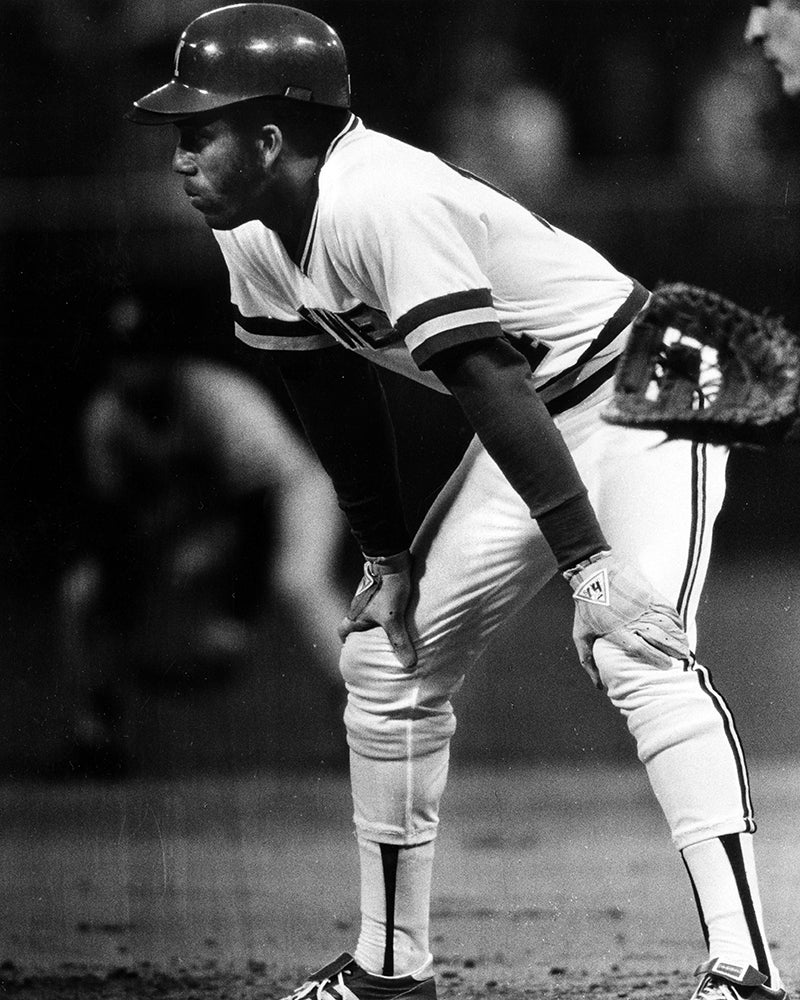
But the Dodgers failed to win the NL West for the first time since 1976. They asked waivers on Joshua following the season, and the Padres assumed his contract.
“It was more difficult when I was younger and wanted to play every day,” Joshua told the AP about his role as a bench player. “But now I’m happy just accepting what comes.”
Joshua appeared in 53 games in 1980, batting .238 before the Padres released him on Aug. 11. He would return to the Mexican League for the next two seasons but never played in the majors again.
But Joshua found a second baseball life as a coach, serving as a Dodgers minor league hitting instructor in the 1980s and 1990s. He coached well into the new century and found himself with the Cubs organization in the late 2000s.
Joshua recognized that his window to become a big league coach was closing.
“I’m not getting any younger,” the 60-year-old Joshua told the Des Moines Register in January of 2009. “My wife kept saying I was going to get back (to the major leagues), and I said as each year goes by, it gets tougher and tougher. It got to the point where I thought the Cubs were going to be my only shot. A lot of the general managers are young, and those guys haven’t even heard of me.”
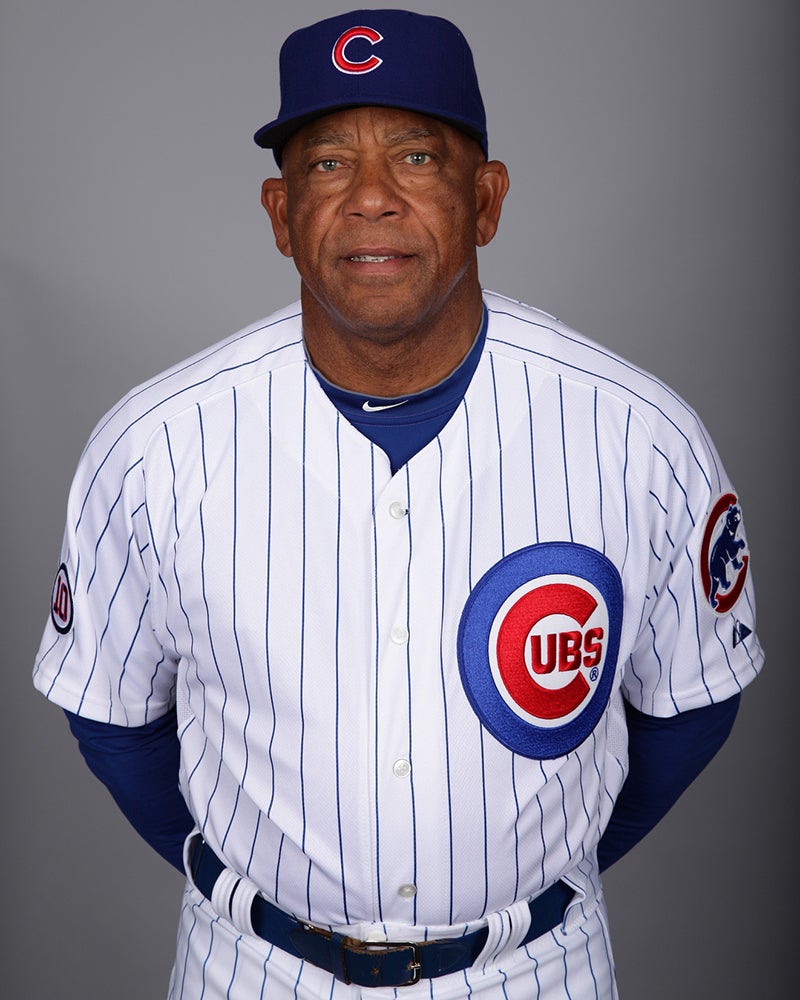
Joshua was promoted to the role as the Cubs hitting coach on June 14, 2009, when Gerald Perry was fired. But the day the 2009 season ended, the Cubs dismissed Joshua while offering him his job back at Triple-A Iowa. The Cubs had a team batting average of .246 when Joshua took over and .255 at the end of the season.
“I told him that it wasn’t anything I was upset with him,” Cubs general manager Jim Hendry told the AP. “He didn’t do anything wrong. But when you come up from the system in the middle of the year, if things don’t make a significant difference in improvement, then obviously in my opinion we need to try something different.”
Joshua remained the Iowa Cubs’ hitting coach through the 2011 season.
Over 10 big league seasons as a player, Joshua hit .273 and compiled a respectable .975 fielding percentage in the outfield. And while his big league numbers did not match his top prospect status, Joshua never – ever – doubted his ability.
“Originally, I just wanted a chance to play,” Joshua said in 1975 while getting his first regular playing time in the big leagues. “But now I want to hit .300.”
Craig Muder is the director of communications for the National Baseball Hall of Fame and Museum
